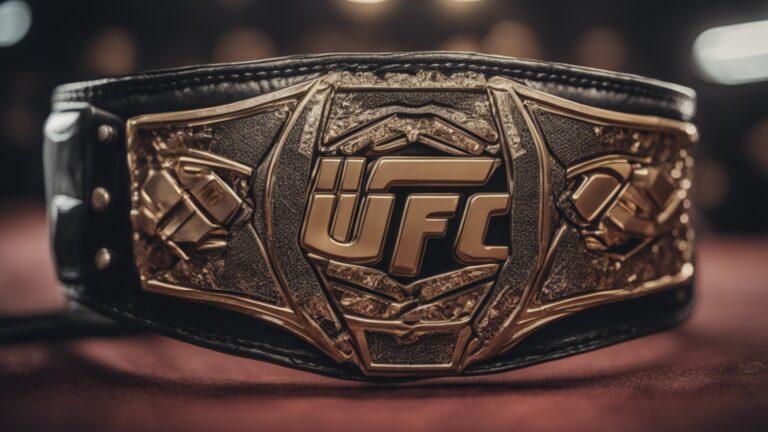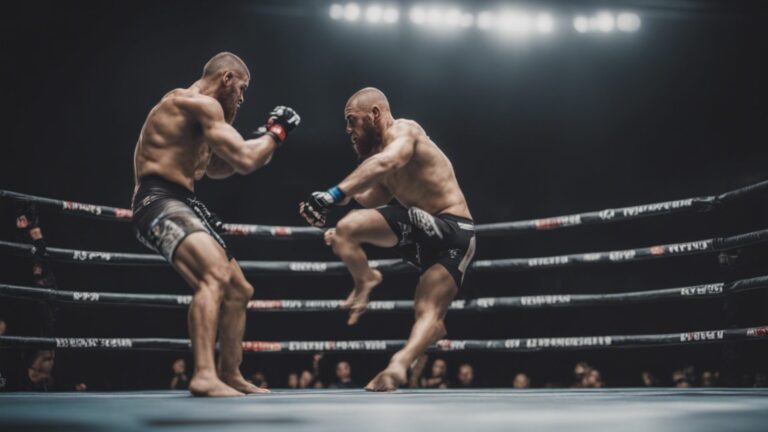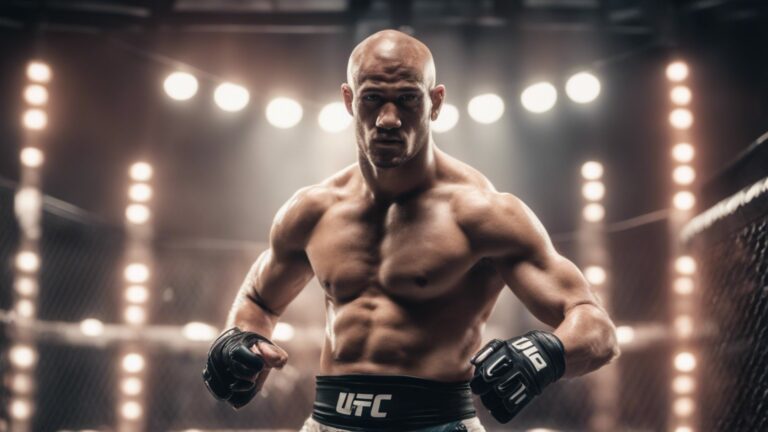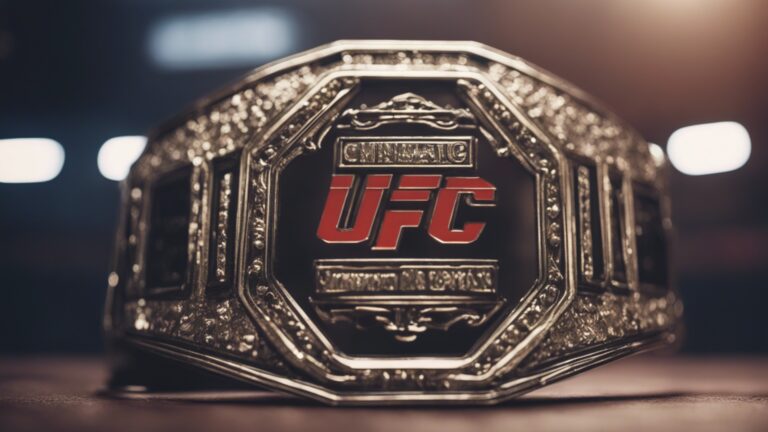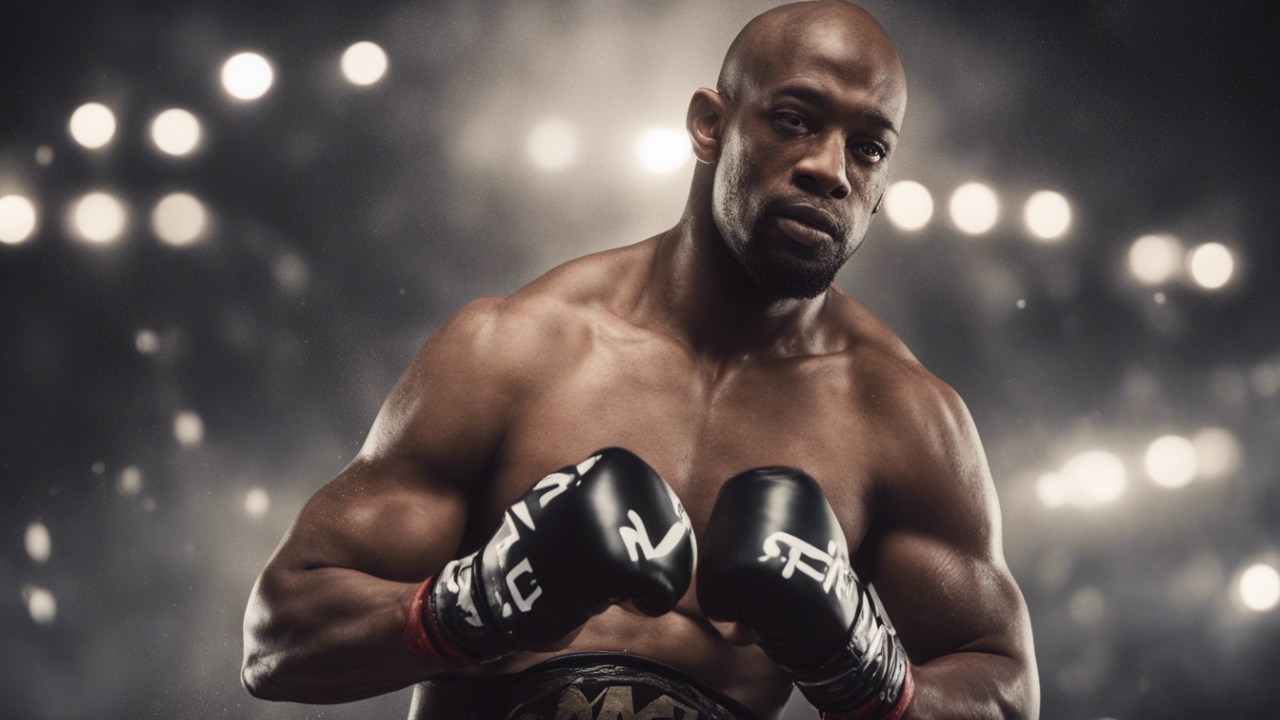
In this article:
Pay-per-view (PPV) in MMA is a broadcasting model in which viewers pay to watch individual fights or events. This model is commonly used for high-profile and championship bouts in mixed martial arts.
Mixed Martial Arts (MMA) has grown exponentially in popularity, leading to lucrative Pay-Per-View events that fans eagerly anticipate.
PPV allows promotions like the Ultimate Fighting Championship (UFC) to offer exclusive, often highly-anticipated, fight cards that viewers purchase to access live.
This monetization strategy capitalizes on the sport’s star power and championship matches, which fans will pay a premium to watch in real time.
PPVs have become synonymous with big nights in MMA, creating a sense of occasion and providing fans with a communal viewing experience.
The success of MMA PPVs relies on a combination of compelling matchups, starfighters, and media hype, all carefully orchestrated to maximize viewer interest and revenue.
Origins of Pay-per-view in MMA
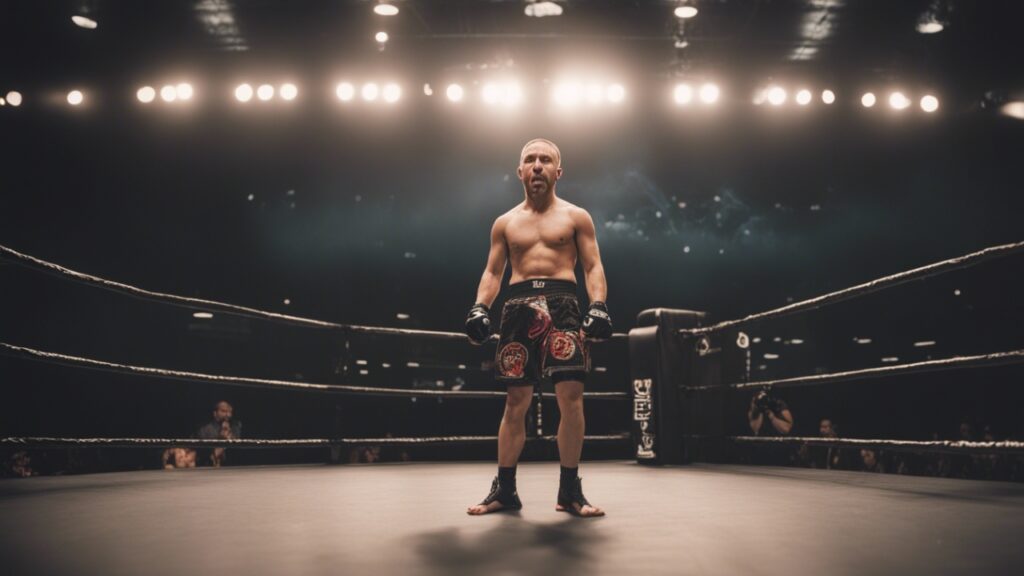
The tale of Pay-Per-View (PPV) in Mixed Martial Arts (MMA) is a journey from obscurity to a global phenomenon.
This story begins in the early days of MMA and narrates how the sport’s growth became tied to the PPV model, changing how fans engage with this combat spectacle.
The First Forays Into Pay-per-view
Imagine the late 1980s, a time of neon leggings, big hair, and the germination of MMA’s PPV roots. Combat sports ventured into PPV, with boxing leading the charge.
The success of these events captured the attention of MMA promoters, hinting at a new revenue stream.
MMA saw its PPV potential with the first notable event in the early 1990s. Spectators now had a seat at their homes, creating a personal ring-side experience.
MMA’s Pioneers and PPV Broadcasts
As the concept of PPV took hold, MMA legends entered living rooms worldwide. Key figures and organizations forged paths into mainstream media.
Early events set the stage for future blockbusters. Rivalries and storylines became more accessible through PPV, enhancing the sport’s appeal.
Breakout stars solidified MMA in the PPV market. These pioneer broadcasts were critical in shaping what MMA PPV has become today.
Understanding the PPV Business Model
Understanding the PPV Business Model unlocks the lucrative mixed martial arts (MMA) world. In MMA, Pay-Per-View is the main revenue stream.
Fans buy tickets to watch their favorite fighters. Broadcasters and organizations set up the event. They share the profits.
Revenue Sharing in PPV Events
Fighters, promoters, and TV networks are all part of the PPV pie. Right here, let’s break down the split:
- Fighters: They often get a base salary plus bonuses from the PPV sales.
- Promoters: They organize the event, and they, too, get a big share.
- Networks: They broadcast the event. They also get a share based on contracts.
Pricing Strategies for Maximum Profit
Setting the right PPV price is key. It should not be too high or too low. Understand the audience and what they are willing to pay.
Here are key strategies:
| Strategy | Explanation |
|---|---|
| Market Research | Know your viewers, their spending habits, and preferences. |
| Tiered Pricing | Offers flexibility – more options for fans to access content. |
| Dynamic Pricing | Adjust prices based on demand or as the event date comes closer. |
Maximize profits by matching prices to fans’ value perceptions. Use data to make smart pricing decisions. The goal is clear: sell more to earn more.
Impact of PPV on Fighter Paychecks
Pay-per-view (PPV) events in Mixed Martial Arts (MMA) are big deals for fans and fighters.
Fighters on a PPV card often see a significant slice of their income from these events. Understanding how PPV affects fighter paychecks opens a window into the business side of MMA.
Main Event Fighters vs. Undercard
Main-event fighters earn more from PPV events than undercard ones. This is because headliners are the major draw for viewers to purchase the event.
PPV buys directly impact their pay through bonuses or a revenue share.
- Main event fighters draw larger crowds.
- More viewers mean bigger PPV bonuses.
- Undercard fighters often receive a fixed amount.
Contract Negotiations With PPV Clauses
PPV clauses in a fighter’s contract can greatly increase their earnings.
Top fighters negotiate these clauses to ensure they get a percentage of the PPV sales, which can significantly affect their total payout.
| Contract Type | PPV Clause Impact |
|---|---|
| Standard Contract | Fixed salary with potential bonuses |
| PPV Star Contract | Base salary plus a cut of PPV revenue |
PPV vs. Other Broadcasting Options
Discover the unique thrill of mixed martial arts with Pay-Per-View (PPV) and explore how it compares to other broadcasting options.
Let’s dive into MMA viewing experiences and find the best ways to enjoy every high-stakes match.
Subscription-based Models
Many fans choose subscription-based models for continuous access to MMA content.
Here’s what to expect:
- Built-in features like live events, original series, and a fight library.
- Monthly or yearly fees enable viewers to watch an array of sports.
- Some services may include PPV with premium plans.
One-time Purchase vs. Annual Access
One-time purchases cater to die-hard fans who want to watch specific, high-octane fights.
Here’s how they differ:
| One-Time Purchase | Annual Access |
|---|---|
| Pay for a single event | Year-long MMA action |
| No commitment required | Commit once, enjoy all year |
| Ideal for unique, big-ticket events | Best for avid MMA enthusiasts |
Select the option that best fits your viewing preferences, and never miss a knockout moment in MMA.
Technological Advancements in PPV
Mixed Martial Arts (MMA) has seen its fair share of evolution, and Pay-Per-View (PPV) broadcasts are no exception.
From the days of scrambled cable signals to the high-definition streams we enjoy today, the journey of PPV within MMA reflects a blend of sports and cutting-edge technology.
Fans witness live matches in ways previously unimaginable, thanks to continuous technological advancements in PPV.
From Cable to Stream: The Digital Transition
Transitioning from traditional cable to online streaming services has changed how fans access PPV events.
Early PPV required a cable subscription, but today’s MMA aficionados can stream fights on multiple devices with an internet connection.
- Accessibility across devices: Fans can watch from smartphones, tablets, smart TVs, or gaming consoles.
- On-demand replays: Unlike cable, streaming platforms often offer on-demand replays of PPV events.
- Global reach: Digital streams allow promotions to reach a worldwide audience instantly.
Enhancing Viewer Experience With Interactive Features
Today’s PPV platforms don’t just broadcast fights; they immerse viewers in the experience. Interactive features are central to this new wave of engagement.
Fans interact with the event in real time, which makes the experience more personal and thrilling.
- Live stats and fighter backgrounds: Viewers access fighters’ histories, stats, and trivia during the event.
- Multi-camera angles: Users control their viewing perspectives, choosing from different camera angles.
- Social media integration: Fans share their reactions and support their favorite fighters on social platforms without missing a beat.
Future of PPV in MMA
The future of Pay-Per-View (PPV) in Mixed Martial Arts (MMA) holds intriguing possibilities. The industry evolution has been rapid.
Fans wonder what’s next for their favorite high-octane entertainment. This section explores how PPV will continue to shape the sport.
Potential Market Expansion
MMA has grown from niche beginnings to a worldwide spectacle. PPV’s future looks bright, with untapped markets on the horizon.
- Emerging economies offer new viewer bases.
- Technological advancements could bring fights to more screens.
- Localized events may broaden international appeal.
Expansion into countries with rising demand for MMA could significantly increase PPV sales.
Challenges and Opportunities Ahead
PPV’s evolution in MMA is not without its hurdles. Yet, every challenge presents a door to opportunity.
| Challenges | Opportunities |
|---|---|
| Cost for viewers | Affordable pricing models |
| Illegal streaming | Enhanced digital rights management |
| Market saturation | Unique event creation |
Digital innovations could outpace piracy, making content secure and widely accessible. PPV platforms might offer tiered pricing, making fights available to a larger audience.
The creation of specialty events could maintain market interest.
Frequently Asked Questions
What is Pay-per-view in MMA?
Pay-per-view (PPV) in MMA refers to a payment model where viewers pay a fee to watch a specific event, usually a fight or a series of fights, typically a major event featuring high-profile fighters.
How Does PPV Work in UFC?
In UFC, PPV events are sold to viewers by cable or satellite providers and through various digital services, allowing fans to watch live events, often exclusive, high-stakes matches.
What are MMA PPV Price Ranges?
MMA PPV price ranges often vary, typically between $50 and $70 in the US, depending on the significance of the event and the profile of the fighters involved.
Can You Stream MMA PPVs online?
MMA PPVs can be streamed online through official broadcasting platforms like UFC Fight Pass, ESPN+, and other authorized digital service providers.
Are All UFC Fights on PPV?
Not all UFC fights are on PPV; some, especially preliminary bouts and non-main event cards, are available on cable networks, streaming services, or free-to-air TV.
What’s the Biggest PPV in MMA history?
The biggest PPV in MMA history is UFC 229, headlined by Khabib Nurmagomedov vs. Conor McGregor and generated 2. 4 million buys.
How Often are PPV events in MMA?
PPV events in MMA vary in frequency, but major promotions like UFC typically host one PPV event per month, showcasing the most anticipated fights.
Do Fighters Get a Share of PPV Revenue?
Yes, fighters often negotiate contracts that include a share of the PPV revenue, particularly headliners and champions, which can significantly boost their earnings.
What Makes a MMA Fight PPV-worthy?
An MMA fight is considered PPV-worthy based on the fighters’ popularity, the stakes of the fight, anticipated matchups, and title implications, attracting more viewer interest.
Can I Watch Past MMA PPV events?
Yes, past MMA PPV events are often available for purchase or included in subscription plans on platforms like UFC Fight Pass and replay services offered by the event broadcasters.
Conclusion
Understanding PPV in MMA allows fans to enjoy exclusive events.
By embracing this pay-to-watch model, viewers directly support their favorite fighters and the industry.
Dive into the excitement of MMA, knowing what PPV brings to your experience. Remember, each purchase fuels the future of this thrilling sport.
Keep watching, keep supporting, and stay thrilled.


